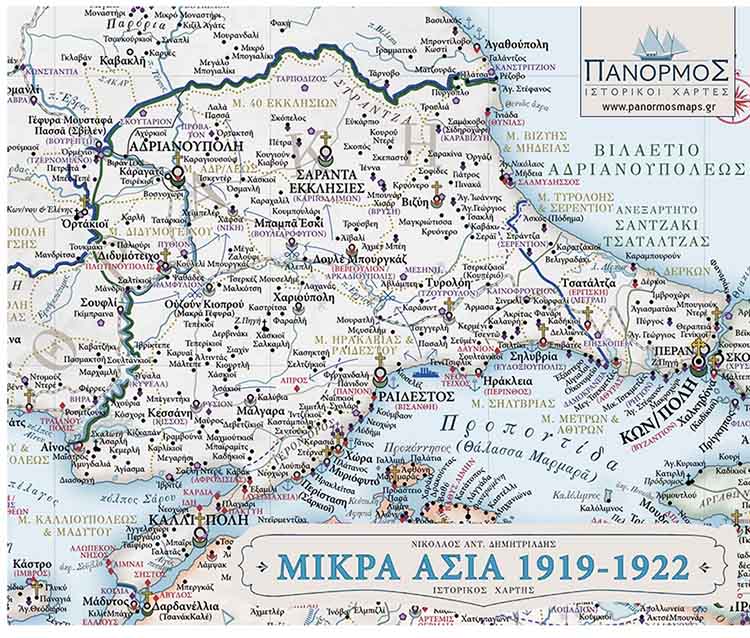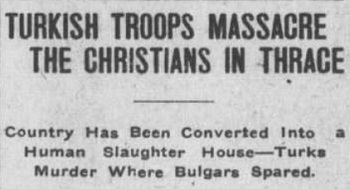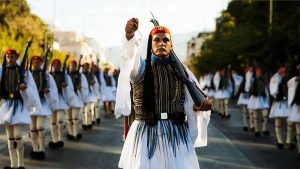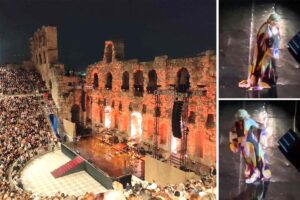The Greek Genocide began in the region of Eastern Thrace, otherwise known today as European Turkey or Turkish Thrace. At a global conference of Thracian Greeks at Didymóteicho in June 2006, April 6 was assigned as the day of remembrance for the genocide of the Greeks of Eastern Thrace. April 6 was chosen because it was on this day during Easter of 1914 that the persecution of Greeks in the region intensified. The Greeks of Eastern Thrace refer to this day as Black Easter (Gr: Μαύρο Πάσχα).
The regime responsible for the persecution of the Greeks of Eastern Thrace before and during the First World War was the Committee of Union and Progress (C.U.P) otherwise known as the Young Turks. The methods used to eliminate Greeks in the region included, boycotting of businesses, looting, murder, deportation, extortion and the pillaging of towns, villages and places of worship. The methods were so effective, and were met with such little or no resistance and international condemnation, that similar methods were later used against Greeks and other ethnic groups throughout the Ottoman Empire to bring about their destruction.
The population of Greeks in Eastern Thrace at the beginning of the 20th century was more than 350,000. During the genocide, many of these Greeks were exiled to Greece, while 100,000 were deported to the interior of Asia Minor and only half returned.1

Persecutions from 1912-1913
Between the years 1912-1913, 15,690 Greeks were massacred in Eastern Thrace.2 A November report describes how the Ottoman Army at Aivali near Lüleburgaz massacred 167 Greek men, women and children. Four hundred Ottoman cavalry destroyed the Greek villages of Yagato and Golcuk, Bayramiç and Elmalı in the Malgara region. At Keşan, 300 Greeks were massacred.3

Montpelier Examiner (Idaho), 1 Aug 1913. Source
Massacres of Greeks intensified in 1913. In July, the Ottoman Army massacred Greeks at Gönence, Tekirdağ, Hayrabolu, Hasköy, Hemit, Kürtüllü and Bayramtepe and committed widespread looting and rape. The burning of churches and entire villages usually coincided with massacres.4 In the region of Malgara alone, 18 Greek villages were wiped out. The Greek Patriarchate protested vigorously both to the Ottoman Government and foreign consulates but with no effect. In 1913, authorities also implemented a policy of deportation to destroy Greek communities. The deportations escalated in 1914. According to Taner Akçam:
The forcible expulsions and migrations from the area of Eastern Thrace began in the Spring and Summer of 1913. Attacks against the local Christian population continued throughout the year, but after 1914, the forcible removals began to take on a more systematic form.5
READ MORE – https://greek-genocide.net/index.php/overview/documentation/eastern-thrace?highlight=WyJ0aHJhY2UiXQ==










